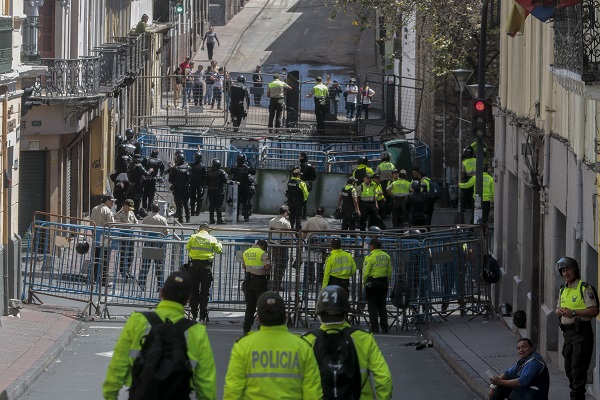Quito, Ecuador is getting back to normal after 11 days of sometimes violent protests that ended Sunday night when the Lenin Moreno government and indigenous leaders came to an agreement about the presidential decree that had eliminated fuel subsidies, the move that had originally sparked the demonstrations.
In the Ecuadorian capital, urban and metro transportation services suffered operational problems and on the weekend there was practically no way to get around the city by public transport.
Meanwhile, taxis plied the streets relatively normally and early Monday morning shopkeepers were opening up their stores and people were moving about and commuting to work virtually without hindrance.
The city seems to be getting back to normal on Monday after a complicated weekend that included a government curfew decree in Quito and its neighbouring valleys in an attempt to ensure public safety and avoid chaos amid the increasing protests, vandalism and other criminal activities, Xinhua news agency reported.
The standard public transportation remains at 0.35 US cents, 10 cents above its level at the start of the protests due to the increase in fuel prices.
After the agreement to review Decree 883, which eliminated the fuel subsidies, Quito city authorities asked the National Transit Agency to deliver an “immediate official statement” about the transport rate.
In other parts of the country, public transport was moving normally, although certain stations and terminals did not open first thing in the morning because of an absence of buses arriving from the provinces.
School classes remain suspended, however, with the Education Ministry announcing that the situation in each city would be evaluated to determine when classes would be resumed in a staggered manner throughout the national territory.
Quito airport operations resumed on Monday after more than 100 flights – both domestic and international – had been cancelled the day before.
On Monday, the Quito City Hall on its Twitter account called on the public to help clean up the capital, saying: “We want our city to be pretty, clean and we need you, everyone. We Quito residents are in solidarity on this and we’ll see a great Quito once again.”
In response to the city government’s call, and on their own, thousands of people were participating in clean-up activities to remove evidence of the demonstrations, including trash, bonfire debris, paving stones and downed tree branches.
In El Arbolito park, considered to be Ground Zero for the protests in the capital, people were removing all sorts of debris, while authorities were evaluating the damage left by the protests all over the city.
Meanwhile, members of the public were asking on the social networks who would bear the costs of the damage from the protests, which left certain areas – such as the vicinity of the National Assembly and the Comptroller’s Office, which was partially burned – looking like war zones.
On Sunday, the Attorney General’s Office on Twitter said that although it had requested “preventive incarceration for terrorism for the 27 people arrested in the (attack on the) Comptroller’s Office,” a judge ruled that 14 of them would continue to be held but the other 13 would be released and have to present themselves two times a week before judicial authorities until their cases are resolved.










